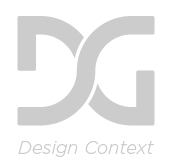In The COP seminar yesterday we looked at a few different theories, primarily Deconstruction by Jacques Derrida and Pastiche by Fredric Jameson.
We started by looking at Derrida's theory of Deconstruction. This theory evolves for Structuralism and Post-Structuralism theories in the 70's and 80's. The understanding I gained of this theory is fairly vague and after researching further into it I realised how deep this theory goes. It applies to a vast range of subject areas but in this session we looked into the way this theory applies to Graphic Design and Art (especially Ellen Lupton's writing on this.)
Derrida believes that in western society we have a tendency to ‘create dualistic oppositions.' For example speech and writing, presence and absence or mind and body. Derrida says that we often create a hierarchy between these oppositions which privileges one over the other and his writing questions these assumed hierarchies. Derrida believes that these hierarchies are superfluous, each dichotomy needs the other to exist. For example, for there to be presence, there needs to be absence. Or as Lupton puts it ‘Deconstruction attacks such oppositions by showing how the devalued [...] concept inhabits the valued...’
One of the oppositions that features in Derrida's writing is between speech and writing. He writes that we value speech over writing; ‘speech draws on interior consciousness, but writing is dead and abstract’. We looked into the way that this applies to typography and some examples of work which try and adhere to this theory.


The second theory we looked at was Fredric Jameson's theory of 'Pastiche.' I found this much easier to grasp than the theory of Deconstruction. Although I don't necessarily agree with Jameson's theory I can see where he is coming from and the points he was trying to make with his writing. Pastiche is essentially a piece of creative work that imitates another practitioner or another period in History. Fredric Jameson is a Marxist Political critic, essentially an anti-capitalist. He says that 'postmodernity has transformed the historical past into a series of emptied-out stylizations.' Essentially the re-appropiation of historical visual styles causes us to lose touch with history and provokes a fascination with the present. This is turn means that these visual styles are commodified and consumed, which in itself enforces capitalist thinking.
Personally I don't believe that this necessarily a bad thing. Isn't progression made by taking things from our past, altering them and combining them. Nothing is every truly original and I don't think everything should strive to be modern and new. There is so much valuable material from the past and I believe it would be ridiculous let all this fall into the confines of history. These visual styles can be used effectively in the modern day and personally I think they should be used.

